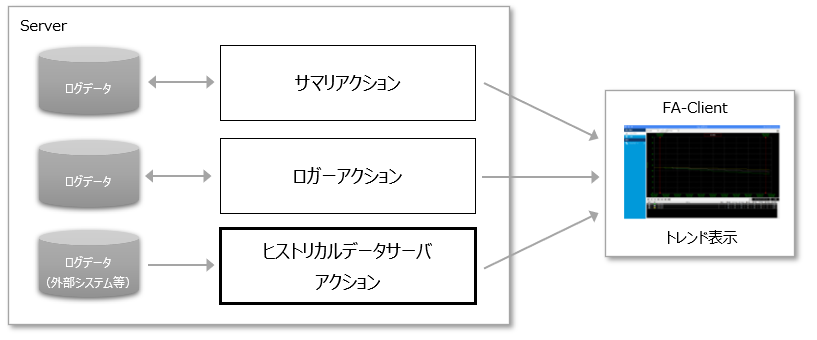Purpose of Historical data server
"Historical data serverAction" is an action for connecting to a database in which historical data (time-series log data) is stored and retrieving the data.
Historical data server actions include CSV and ODBC. By using this action, log data generated by an external application can be imported by mapping it to a FA-Server data source, and can be used in trend graphs, etc. Data sources mapped by Historical data server can be treated in the same way as summary actions and logger actions.

Historical data server can handle time-series log data that includes date and time fields. In addition to the date and time fields, it can also handle fields that store milliseconds. The millisecond field is not required. Also, a header row for the data is not required (it can be used with or without a header).
(Example of log data)
Date and Time |
Milliseconds |
DATA00 |
DATA01 |
DATA02 |
... |
DATAn |
2017/1/1 10:12:00 |
101 |
23 |
0 |
25 |
... |
75 |
2017/1/1 10:12:01 |
20 |
44 |
1 |
56 |
... |
34 |
... |
... |
... |
... |
... |
... |
... |
This topic includes the following sections:
content |
overview |
Display trends of log data from external systems via CSV
|
This article explains how to use the Historical data server (CSV) action to import CSV log files generated by other systems and display them in a trend graph.
|
Trend display of log data from external systems via ODBC
|
This section explains how to use the Historical data server (ODBC) action to import log files generated by other systems in a database via ODBC and display them in a trend graph. |